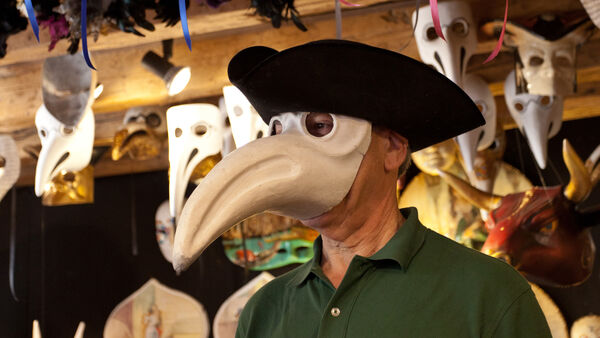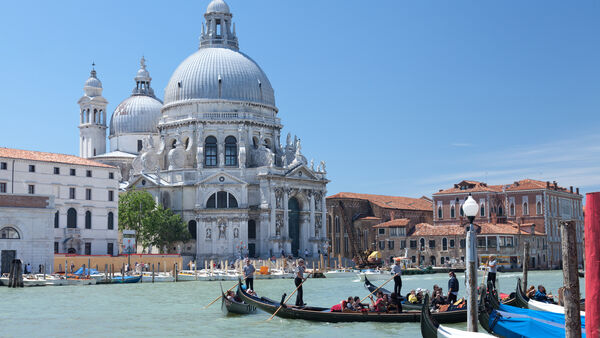The Plague That Shook Medieval Europe


By Rick Steves and Gene Openshaw
Ever wonder why we say, "God bless you" when someone sneezes? It's because of the bubonic plague. Town squares throughout Europe still sport (often gaudy) "plague monuments" built by dazed, grateful survivors.
The medieval equivalent of a nuclear holocaust, the bubonic plague — or "Black Death" — killed as many as one-third of Europe's people in three long years (1347–1350). The disease spread quickly, killed horribly, and then moved on, leaving whole cities devastated in its wake. The economic, physical, and emotional shock is unsurpassed in European history. Most saw the plague as not just a disease, but a heavenly curse "sent down upon mankind for our correction by the just wrath of God." It killed with such power and swiftness that "the living could scarcely bury the dead."
In 1347, a Genoese ship landed in Sicily, carrying a deadly cargo: rats with the bacteria known as the bubonic plague. (The ship had become infected in Central Asia during battle, when a clever Mongol chieftain catapulted diseased corpses into their camp.) Within three years, the plague had spread through Italy, France, and most of Europe. An estimated 30 million Europeans died.
The disease is caused by a bacteria carried by fleas (which travel on rats). Humans get it when bitten by the fleas, and then spread it by coughing. The unsanitary conditions in medieval Europe allowed the disease to move rapidly northward. London, Vienna, Florence, and Avignon (the papal city at the time) were particularly hard hit. In Florence alone, 100,000 died within four months. In some cities, 90 percent of the population was wiped out.
The symptoms were quick and harsh. The first sign was sneezing (hence, "God bless you"), followed by the appearance of lumps, or "buboes" (hence, "bubonic"). Then came fever, constant vomiting (often blood), diarrhea, pneumonia, and, almost inevitably, death within three days.
So many died so quickly that there was no place to bury them. After the churchyards were full, they made vast trenches where bodies were heaped in mass graves. The disease was so infectious that it seemed impossible to avoid. The most frightening part was that nothing could be done to help the afflicted, who were abandoned by the healthy to avoid contagion.
To ward off the plague, a fanatical sect called the "Brotherhood of the Flagellants" tried to take the sins of Europe upon themselves. They marched through cities, chanting repentance, and calling on the citizens to join them as they stripped to the waist and whipped themselves with knotted scourges. Thousands joined the hysteria, and the Brotherhood became more popular in some areas than the priests, whose rituals had been powerless during the plague. It was a strange and troubled time, and social neurosis swept across Europe. The popularity of witchcraft soared; devil appeasement and death cults had many people doing the danse macabre. Some figured, "What the heck? The end is near!" — and dove headlong into one last hedonistic fling.
A few remote pockets of Europe escaped the Black Death, including Oberammergau in southern Germany. As the sickness claimed lives in nearby villages, the townspeople of Oberammergau prayed for mercy. If spared, they promised to put on a grand production every 10 years, depicting Christ's crucifixion. Oberammergau remained untouched, and the town has been holding a Passion Play each decade for over 300 years. (In order to spare itself from a new kind of plague — the 2020 coronavirus pandemic — the town was forced to break that promise.)
The Black Death of 1347–1350 was only the worst of numerous plagues in Europe. Eventually, this plague became just a lingering memory in Europe's collective subconscious. Petrarch, who witnessed the horror of those years, correctly prophesied: "Posterity, will you believe what we who lived through it can hardly accept?…Oh how happy will be future times, unacquainted with such miseries, perhaps counting our testimony as a mere fable!"
Strange as it may sound, some good came out of all the loss of life. The dead were mostly Europe's poor, and with fewer people, the common worker could demand a better wage. Technology itself had not been affected by the plague, and there were now fewer people to divide the fruits of that technology. The survivors went on a materialistic and hedonistic buying spree, trying to forget the horrors they'd seen. Luxury goods — fancy clothes, good food and drink, lavish houses, entertainment — were in high demand. For the first time, the lower classes enjoyed such "luxury items" as chairs, dishes, and fireplaces.
Europe's troubles in the 1300s — the plague and the Hundred Years' War — actually thinned out and revitalized society. The European ship of state had to treat its bilge rats with a little more respect. The old feudal order was crumbling, and individuals could actually hope to chart their own destiny. A lean Europe was primed and ready to ride the waves of the future.
Gene Openshaw is the co-author of Rick Steves' Europe 101: History and Art for the Traveler.

